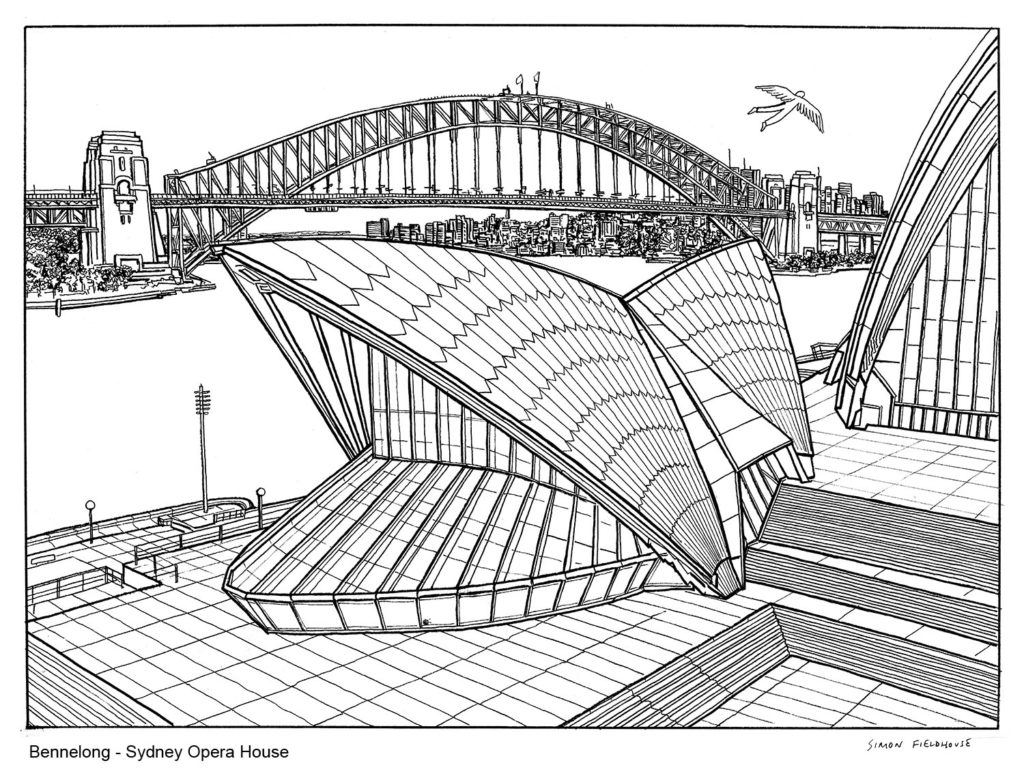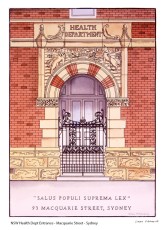
Health Department Macquarie Street Sydney
Ornate stone and brick design representative of the 1880s architecture in Sydney
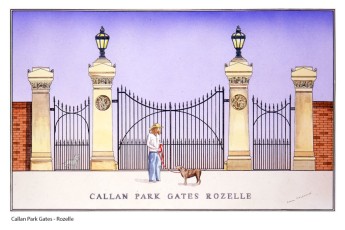
Callan Park Gates -Rozelle
In 1873 the Colonial Government of New South Wales purchased the Callan Park site, then known as "Callan Estates", with the purpose of building a large lunatic asylum to ease the severe overcrowding at the Gladesville Hospital for the Insane, at Bedlam Point, near Tarban Creek in Gladesville. The new lunatic asylum was designed according to the views of Dr Thomas Kirkbride, an American. Colonial Architect James Barnet worked with the Inspector of the Insane Dr Frederick Norton Manning to produce a group of twenty neo-classical buildings. These were completed in 1885 and named the Kirkbride Block.
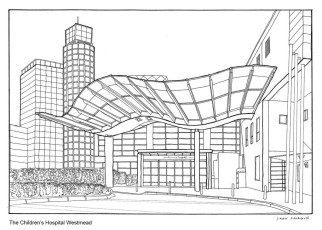
The Children's Hospital Westmead
In1880, the Sydney Hospital for Sick Children opened in Glebe. There were four doctors and six nurses who treated 55 sick children in the first year. The most common things that made children sick were infectious diseases like diphtheria, gastroenteritis and polio.

Dame Eadith Walker Hospital
The Dame Eadith Walker Estate is of outstanding cultural significance for NSW. It comprises a unique complex of 19th and early 20th century buildings in an essentially rural landscape setting and is an exceptionally rare complete example of a large Edwardian private residential estate in Australia and one in close proximity to the city. The estate has direct historical links with the early days of the colony of NSW and is strongly associated with an important mercantile and philanthropic family.
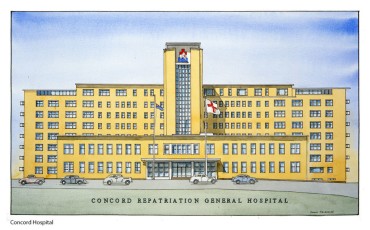
Concord Hospital
Concord Hospital was established in November 1940 as the 113th Australian General Hospital. In February 1941 the Commanding Officer, Lieutenant Colonel William Wood and a nucleus of staff arrived to take quarters at the hospital.
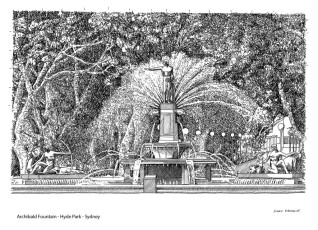
Archibald Fountain - Hyde Park - Sydney Drawing
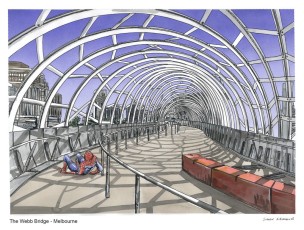
Webb Bridge Melbourne
The Web Bridge in Melbourne in the dock lands was designed by Denton Corker and Marshall and erected in 2005. It's one of the most unusual pedestrian bridges in Australia.
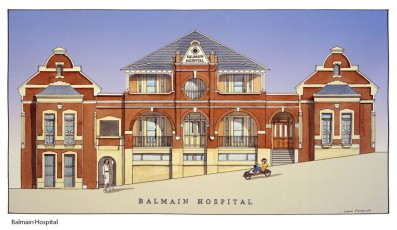
Balmain Hospital
Balmain Hospital is a community based hospital which has been caring for people since 1885 and is dedicated to Aged Care, Rehabilitation and General Practice. Balmain Hospital is committed to providing the highest standards of health care, to meet individual needs.
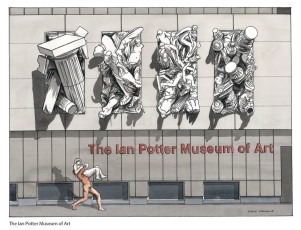
Ian Potter Museum Melbourne
The Ian Potter Museum of Art, established in 1998 is an art museum at the University of Melbourne in Melbourne, Australia.[1]
The Potter, as it is known locally,[1] presents a curated exhibition program of historical and contemporary art. Through its activities the Potter provides for the acquisition, maintenance, conservation, cataloguing, exhibition, investigation, interpretation and promotion of the extensive art collections of the University of Melbourne. It is housed in a multi-award winning building designed by Nonda Katsalidis
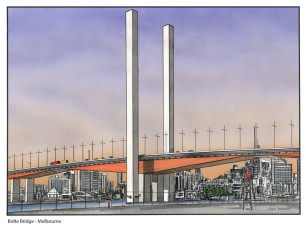
Bolte Bridge Melbourne
The Bolte Bridge is a large twin Cantilever bridge in Melbourne, Victoria, Australia. It spans the Yarra River and Victoria Harbour in theDocklands precinct to the west of the Melbourne CBD. It forms part of the CityLink system of toll roads that connects the Tullamarine Freeway from the northern suburbs with the West Gate Freeway and the Domain and Burnley tunnels to the Monash Freeway and the south eastern suburbs.
The bridge was designed by architects Denton Corker Marshall and was built for head contractor Transurban by Baulderstone Hornibrook, construction taking three years from 1996 to 1999 and costing $75 million. It was named by Jeff Kennett, for former Premierof Victoria, Sir Henry Bolte because of its linking the West Gate, Monash and Tullamarine Freeways—projects commissioned or completed by the Bolte Government.
It is one of the largest balanced cantilever cast in situ box girder bridges in Australia. The superstructure is built as two independent bridges of variable depth, prestressed concrete box girders, separated by a 1.15 m clear gap between the structures.
The bridge features two 90 metre (295.2 ft high silver towers, situated on either side of the roadway at the midpoint of the bridge's span. These two towers are an aesthetic addition by the architects, and are not joined to the main body of the bridge.[1] These towers are hollow, and feature access ladders to a small roof top hatch. Until locked and surrounded by water, these towers were a popular target for urban explorers. It has four spans with two main spans of 173 metres (567.6 ft) and side spans of 72 metres (236.2 ft), giving an overall bridge length of 490 metres (1,607.6 ft). The bridge supports six lanes of automobile traffic. Access is prohibited to cyclists and pedestrians.
Other bridges in Australia of similar construction are the Gateway Bridge, Brisbane and Mooney Mooney Bridge near Gosford, north of Sydney.

St Mary's Cathedral - Sydney
St Mary's Cathedral, in College Street Sydney faces Hyde Park. The interior and entrance is a design loosely based on the most famous for Gothic Western fronts of Notre Dame in Paris.
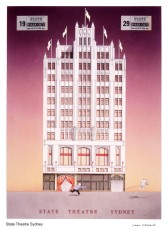
State Theatre Sydney
The State Theatre Sydney is a heritage listed theatre located in market Street in the centre of Sydney it hosts film screenings live theatre and musical performances and since 1974 has been the home of the annual Sydney film Festival
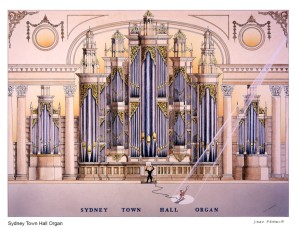
Sydney Town Hall Grand Organ
The Sydney town Hall grand organ is a large pipe organ altered by English firm William Hill and sons in 1890. It is located in the Centennial Hall of the Sydney town Hall. When built it was the largest of its type in the world and is still used regularly for recitals.
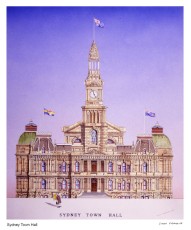
Sydney Town Hall
. It stands opposite the Queen Victoria building and alongside St Andrews Cathedral. The town hall was built in 1880 on the site of an old cemetery.
